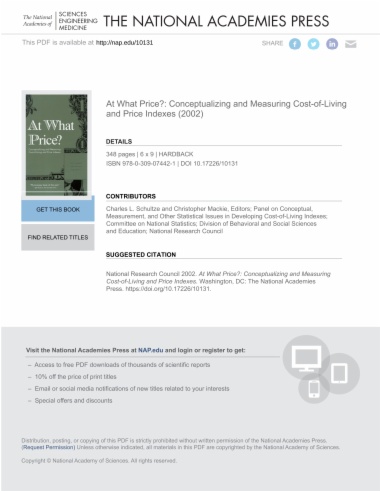How well does the consumer price index (CPI) reflect the changes that people actually face in living costs—from apples to computers to health care? Given how it is used, is it desirable to construct the CPI as a cost-of-living index (COLI)? With what level of accuracy is it possible to construct a single index that represents changes in the living costs of the nation's diverse population?
At What Price? examines the foundations for consumer price indexes, comparing the conceptual and practical strengths, weaknesses, and limitations of traditional "fixed basket" and COLI approaches. The book delves into a range of complex issues, from how to deal with the changing quality of goods and services, including difficult-to-define medical services, to how to weight the expenditure patterns of different consumers. It sorts through the key attributes and underlying assumptions that define each index type in order to answer the question: Should a COLI framework be used in constructing the U.S. CPI?
In answering this question, the book makes recommendations as to how the Bureau of Labor Statistics can continue to improve the accuracy and relevance of the CPI. With conclusions that could affect the amount of your next pay raise, At What Price? is important to everyone, and a must-read for policy makers, researchers, and employers.
- Cover
- Front Matter
- Executive Summary
- 1 Introduction
- 2 Conceptual Foundations for Price and Cost-of-Living Indexes
- 3 Index Domain
- 4 Evolving Market Baskets: Adjusting Indexes to Account for Quality Change
- 5 New Goods and New Outlets
- 6 The Special Case of Medical Services
- 7 Index Design and Index Purpose
- 8 Whose Index? Aggregating Across Households
- 9 Data Collection for CPI Construction
- Appendix Statistical Definition and Estimation of Price Indexes
- References
- Glossary
- Biographical Sketches of Panel Members and Staff
- Index

